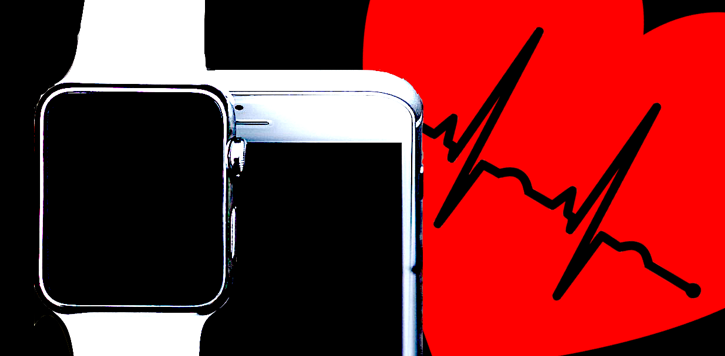Will the Apple Watch Get a Blood Pressure Monitor?
The company has been flirting with the medical device field for longer than some may realize.

Nearly 3 years ago today, Apple filed a patent for a “low-profile blood pressure measurement system” that “may be incorporated into a portable electronic device, or may be configured for use with, or to otherwise communicate with a portable multi-function device.” The filing just came to light, however, last week.
The news was first discovered by The Verge, which declared the tech giant’s proposition somewhat “underwhelming.” The publication rightly notes that the technology itself seems in line with almost all of the other portable blood pressure monitors on the market: A small wrist-worn cuff that uses air cells to determine blood flow.
>>>READ: The Instant Blood Pressure App Was a Success Story…Until it Received Clinical Study
What is perhaps most interesting is the timing and intention. The patent filing came just weeks after the 2015 release of Apple Watch. That device carried a heart rate monitor from its inception, but last summer—2 years after launch—the company made a subtle but sizable tweak: Rather than just being an add-on feature that users could use to check heart rate, the Apple Watch now sends push notifications that notify wearers if their heart rate elevates unsafely when they are not engaged in exercise.
Such interventional capabilities seem to have been on Apple’s mind when the company applied for this blood pressure monitor patent. “The blood pressure measurement system may provide one or more alerts or message to the user relating to the user's blood pressure, and/or reminders to take blood pressure medications, and compliance with blood pressure medications,” the document states. Those features also exist in other blood pressure monitoring devices, but most of those have been cleared by the FDA as medical devices.
According to the filing, examples of user-directed messages could include accumulated blood pressure reports of previous day, week, or month; hypertensive status; prescription refill reminders; and “stress, wellness or fitness level.”
The newly-released filing doesn’t limit the company’s options for how the blood pressure monitor would be deployed: The system may be placed “on a wrist-worn device (e.g., a watch, wrist-band, or bracelet)” or an article of clothing, while the controller could be located on the same unit or a separate computer or tablet with which it could be integrated.
Apple’s patent application does have provisions for Wi-Fi or Bluetooth connectivity and data collection. It says that the device may optionally garner user data that could be used to inform wearers or improve performance, of for “uses that are also reasonable and consistent with policies and regulations.” Outside application of the data would be preceded by informed consent.
It also doesn’t spell out the company’s intentions blatantly—few patent applications do—but it does begin by laying out the public health context for the device, noting CDC hypertension prevalence statistics that said 1 in 3 adults had the condition. In the time since, the American Heart Association and American College of Cardiology have released updated hypertension guidelines that would put that number up to almost 1 in 2.
The news comes as Apple drives further into the complex, highly-regulated world of healthcare. Last fall, it was announced that the company was participating with other tech companies in an FDA pre-certification pilot program. The agency and its Commissioner, Scott Gottlieb, MD, have been vocal about their efforts to encourage health-tech innovation and streamline regulatory appraisal of medical devices.
The company has uniquely positioned itself as a growing threat in multiple healthcare technology markets: The Apple Watch has been trouble for the wearables market, spurring traditional fitness monitor companies like Fitbit to try to compete on the smartwatch front. Meanwhile, the company seems to be prying at the healthcare information sphere, with a feature that allows consumers to view their electronic health records (EHR) on their iPhones and a brand-new application programming interface (API) that will allow developers to build analytics and monitoring tools using wearable and EHR data.
This isn’t Apple’s only effort to get into the blood pressure monitoring game. Last year, it received a patent for technology that checks blood pressure using iPhone’s front-facing camera. That application was also submitted in 2015.
Related Coverage:
No, Apple Watch Can't Detect Irregular Heart Rhythms with 97% Accuracy (Yet)
Fitbit's Stumble Reflects a Changing Wearables Industry
Could an iPhone App Dramatically Reduce Heart Attack Readmissions?
Podcast: Match Made in Hospitals — Patient-Matching Technology Can Improve Healthcare
September 21st 2021Clay Ritchey, CEO of Verato, highlights the administrative and financial benefits that patient-matching technology can provide hospitals and health systems, as well as how it can improve the patient experience.
Podcast: Using Digital Solutions to Address Technology Shortfalls with Citius Tech Senior VPs
July 29th 2021In an interview recorded earlier this year, Chief Healthcare Executive Associate Editorial Director Mary Caffrey spoke with 2 leaders of Citius Tech about meeting healthcare challenges with digital solutions.